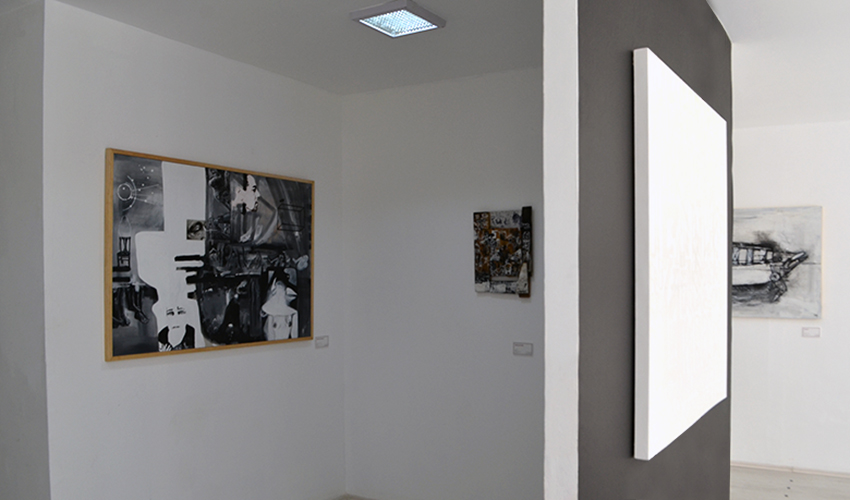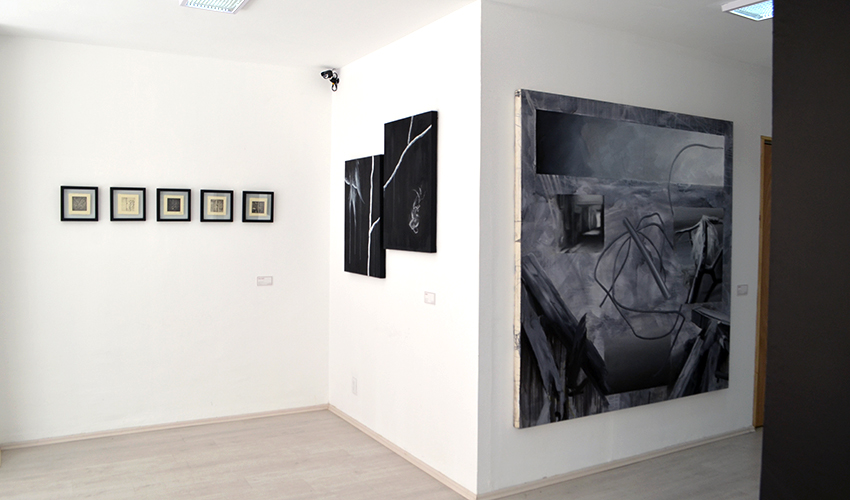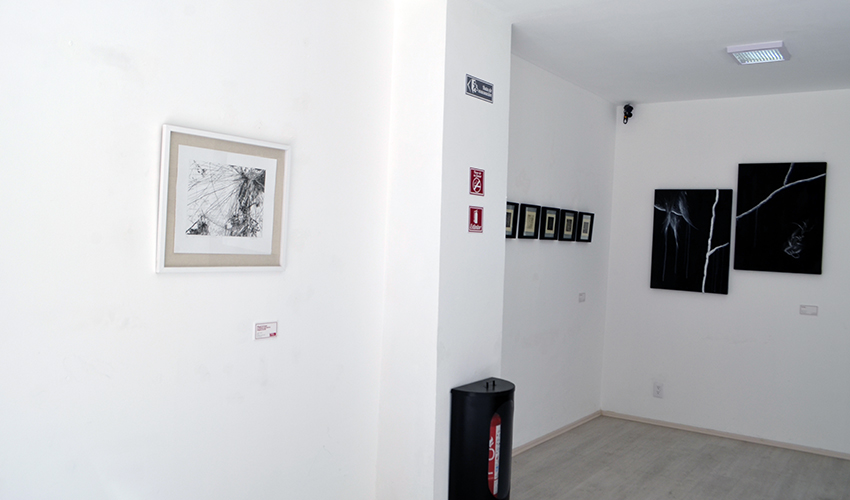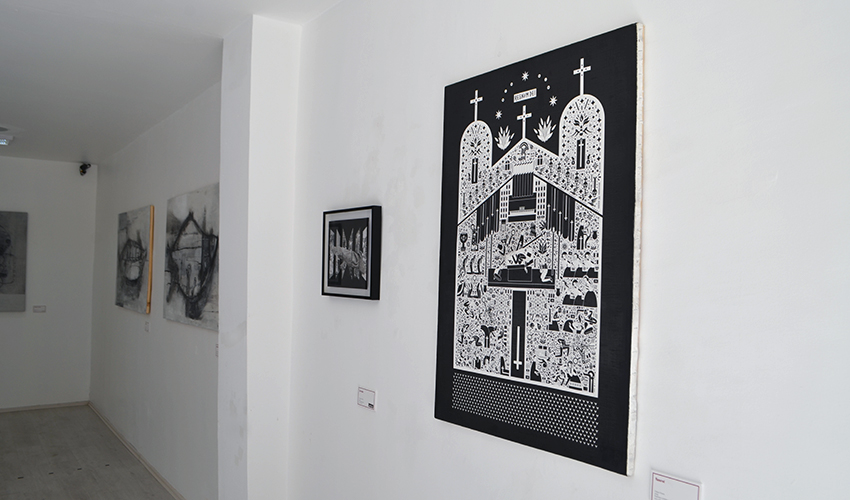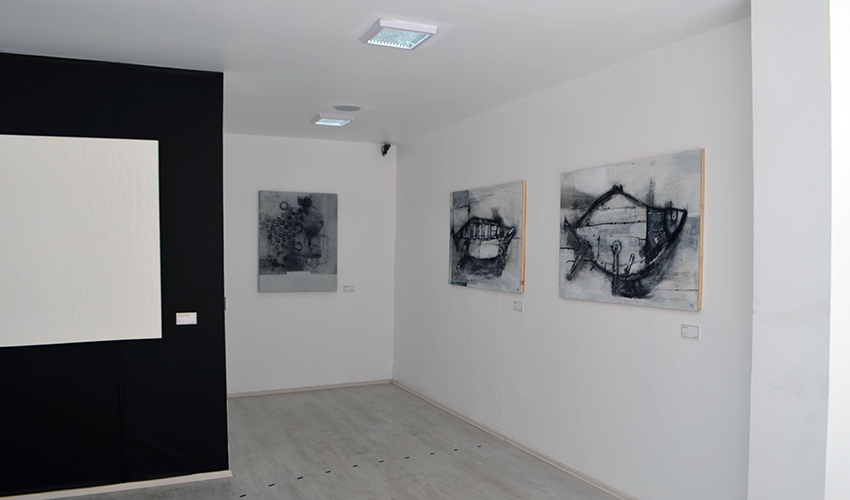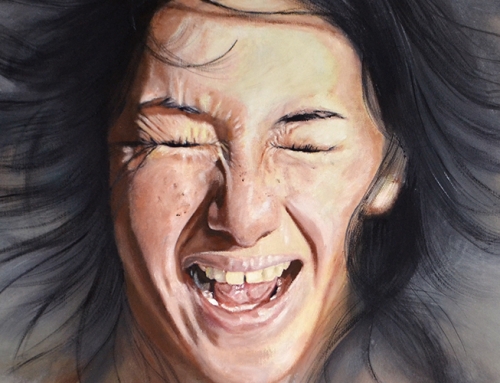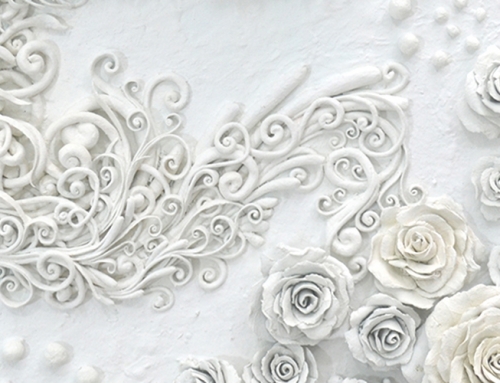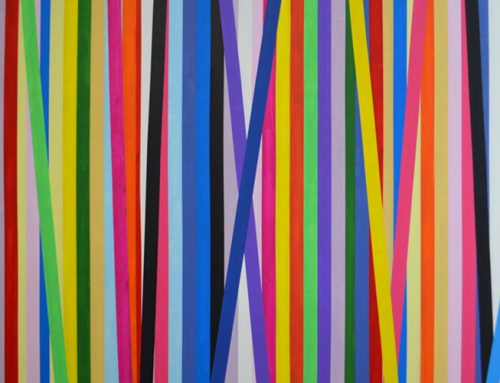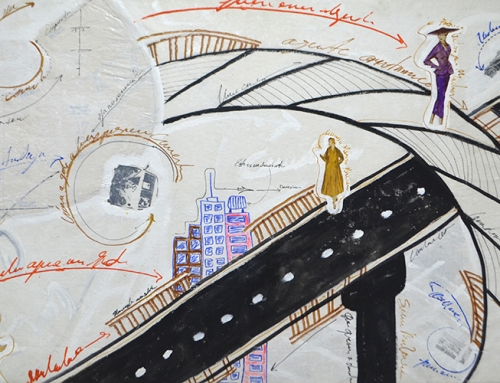Exhibition no. 8.- Black & white. Group exhibition, painting, printmaking and ceramics sculpture. From Friday, April 1st to Thursday, June 2nd, 2016.
Color cannot do anything, that white and black cannot do as well.
Vincente Minelli
In history of art, there have been many artists who have explored the use of black and white in their works, generally as something entirely deliberate and intentional. The use of black and white was very common during the European avant-garde, this monochromatic scheme was generally used to highlight the formal structure, emphasize tonal values or perhaps not to divert attention from the theme with the use of color. Today, some of these goals are still present.
In this exhibition, 16 works by 13 artists shows a production of images that have no colors except black, white and shades of gray.
Ningun horizonte/ni caminos, ni fronteras/ninguna herida (No horizon/no roads, no borders/no wound) by Julieta Trujillo is a work full of emotion, built through loose and unpredictable lines that create a balance between the areas with light and the dark areas.
The works El tercer espacio (The third space) by Jimena Manzanares, Sin titulo (Untitled) by Marisol Sagastume and Stalker IV by Rodrigo Ramirez, allude in the first instance to a natural environment, the trees, their leaves, their branches, but the fact that something which by nature is full of color, whether in these cases represented in black and white generates new questions. The work of Manzanares, has a taxonomic character and that being made up of several pieces alludes to a cycle, to life. Any representation to nature is generally associated with life, and is even announced as a symbol of physical, psychic and spiritual strength, but in the work of Sagastume and Ramirez, that image is cracked. Their works convey a certain empathy towards those imperfect and dramatic moments.
Not very far from this line but with very different formal languages are the works Sesiones con Valeria I y Sesiones con Valeria II (Sessions with Valeria I and Sessions with Valeria II) by Sebastian Elias Gomez and 5 pesos y un simio (5 pesos and an ape) by David Cruz. Both of them with incisive looks towards their own vision of the world. In the first case, it is a vision towards their inner world, while for Cruz it is towards the world around us. Elias Gomez, opens a window to his own existence and allows us to see it as if we were occupying a place of therapist. On the other hand, Cruz shows us with an overflowing carelessness, abandonment, chaos and bewilderment of the world in which we live.
The sculptures Casa Vacia and Solo casa (Empty home and Only home) by Pilar Banuelos also revolve around the intimate, through the volume, texture, and writing of small architectures. The finishing of the pieces in black, gray and the natural tone of the clay, highlight the details of these elements, which are fused to dialogue in an intimate and personal poetics.
With the same personal and somewhat secret distinction, the artwork El negro sobre el blanco (Black over white) by GNT comes from the graffiti universe, making room for the intrinsic need for speed, size and visibility. People can engage in a visual dialogue that is not based on face-to-face interaction or prior knowledge about the author’s identity.
Coming also from other spheres of language, there is Être I by Mariana Romani and Escrituras circulares (Circular writings) by Eduardo Mejorada. The first was done through a mobile phone app, in which the artist explores different uses of the line through digital world. In the second, abstraction becomes the perfect language of its creator and the perfect territory to generate its own communication system.
The works Lacustre I, and Lacustre III (Lacustrine I and Lacustrine III) by Fabian Gonzalez, allows us to create a mysterious statement about the existence in the water. In his works, the artist leaves trapped two aquatic animals under a fossil aesthetic.
Finally, two finely narrative works, Sin titulo (Untitled) by Rodrigo Zavala and Funeral by Cesar Flores. The first shows us an axolotl that crosses different planes as if it crossed different chapters within the history of a city, being able to refer to Julio Cortazar who described this animal as a witness and sometimes judge of the history of Mexico. The second also speaks of a microcosm, which shows a social ecosystem that is enriched thanks to an aesthetic based on the reinterpretation of some elements belonging to Mexican crafts.
